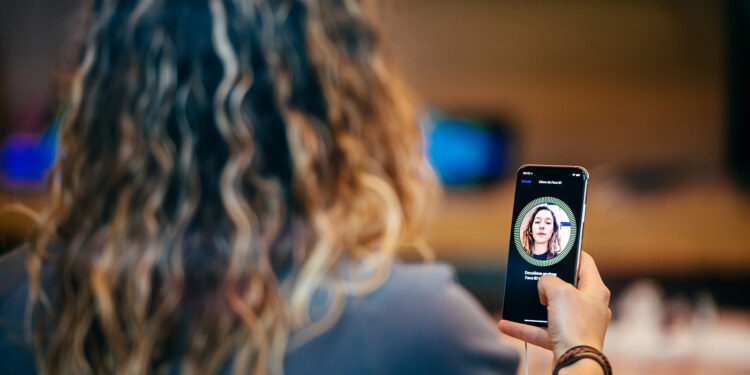Apple has been at the forefront of technological innovation for years and is always trying to set new standards. One of the company's most ambitious visions is the integration of Face ID directly into or under the display. While this goal has long been thwarted by technical hurdles, a new patent suggests that Apple could be on the verge of a breakthrough. The ability to put Face ID under the display would not only revolutionize the design of iPhones but also take the user experience to a new level.
The idea of an iPhone made of a single, unbroken pane of glass is not a new one. Jony Ive, Apple's former design chief, saw this vision as the "holy grail" of iPhone design. This vision is still alive today. The integration of Face ID into the display is a crucial step that brings Apple closer to its goal. But the road to achieving this has been rocky so far, mainly due to the technical challenge that infrared light cannot penetrate the display efficiently. But now Apple seems to have found a groundbreaking solution.
The technical challenges
Face ID is based on infrared light, which is used to scan and recognize the user's face in three dimensions. The biggest problem with integrating this technology into the display is that the transmission of infrared light through the display is extremely inefficient. The result: unreliable or slow facial recognition. Apple has tested various approaches over the years, including selectively disabling pixels to improve IR transmission. However, these methods were either too complex or not effective enough.
The new patent: A groundbreaking solution
This now discovered Patent describes a new, simpler and more effective method. Apple proposes removing some subpixels in the display to make room for infrared transmission. Subpixels are the individual red, green and blue light emitters that together create the color of a pixel. By selectively removing certain subpixels, gaps could be created through which the infrared light can pass unhindered. In order not to impair the visual quality of the display, Apple has developed a clever solution: the removed subpixels are replaced by neighboring subpixels. The human eye would not perceive the missing subpixels because the color quality is maintained through this intelligent use of the neighboring pixels.
Additional optimizations
Apple goes one step further. In addition to removing subpixels, parts of the wiring and touch-sensitive mesh in the display could also be adjusted or removed to remove further obstacles to infrared transmission. These changes would be so small that neither touch functionality nor visual representation would be affected. These optimizations could significantly improve the transmission rate of infrared light, which would raise the performance of under-display Face ID to a level comparable to current technology.
Will the technology come with the iPhone 17?
There is already speculation that Face ID under the display could be introduced with the iPhone 17. According to reports, the iPhone 17 Pro Max could feature a smaller Dynamic Island, indicating that at least part of the Face ID technology could be relocated under the display. The iPhone 17 Air, a model that aims for a particularly slim design, could also serve as a platform for this new technology. However, there have already been predictions in the past that this technology would be introduced in the iPhone 15 or 16, which have not come to pass. Therefore, it remains to be seen whether Apple will implement the integration with the next generation of iPhones.
iPhone: Will Face ID under the display soon be a reality?
The new patent shows that Apple is determined to realize the vision of a seamless iPhone display. The proposed technologies could overcome the biggest obstacle in integrating Face ID under the display. Whether we will see this innovation with the iPhone 17 remains unclear, but one thing is certain: Apple is working hard to shape the future of iPhone design. The next big revolution in the smartphone sector could be closer than we think. Are you looking for new accessories? Then take a look in our Amazon Storefront - there you will find numerous products from leading suppliers, also for HomeKit and Co.! (Photo by hadrian / Bigstockphoto)
- Revolutionary MacBook: Apple's plans for a glass laptop
- Apple Vision Pro Patent: Gesture control as desired
- A revolutionary concept: The future MacBook Pro made of glass
- Patent reveals Apple's work on glass iPhone and more
- Apple Patent: Will there be an iMac made of glass?





